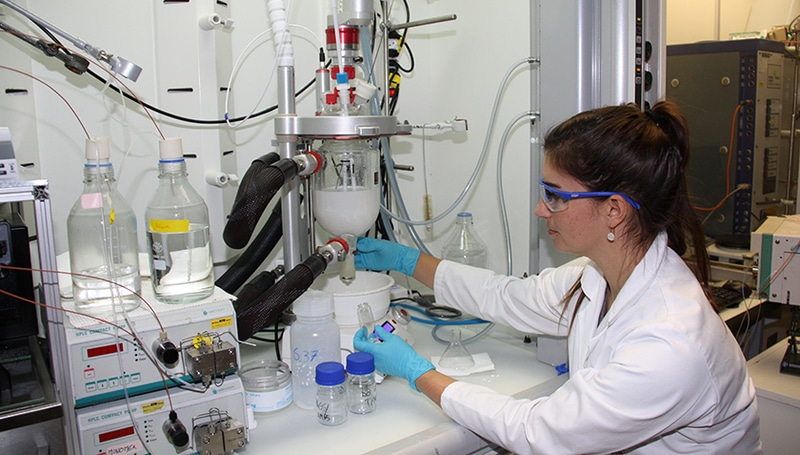Feb 5 2019
Over 98% of the tiniest plastic particles from sewers are retained in sludge. Scientists have been able to establish this by integrating the precious metal palladium as a tracer in artificial nanoplastics. This innovative technique has significant potential for monitoring the behavior of nanoplastics in technical systems and in environmental locations.
 Image credit: Eawag
Image credit: Eawag
Minute plastic particles measuring approximately 100 nm (millionths of a millimeter) are used in numerous products, for instance, to encapsulate aromatic substances or dye or as additives to cosmetics and shampoos. Many of them end up directly in sewage the instant the products are used. Along with other plastics, for instance, from tire rubber in road run-off, they land in the water-treatment plants. But thus far, it has not truly been viable to measure them there. In contrast to larger particles (microplastics), they cannot just be sieved out and weighed or counted. Furthermore, it was vague, except in models, how much nanoplastic was retained in water-treatment facilities and how much got into the environment.
Recently, a team of scientists from Eawag and the ETH Zurich have formulated a technique that allows the tracking of nanoplastics: they have created plastic particles with the precious metal palladium embedded into the center of the particle. This can be fairly easy to examine using standard techniques. In their paper in the current issue of nature nanotechnology, the scientists demonstrate how they have effectively used the technique on a laboratory scale to investigate the behavior of nanoplastics in the activated sludge process of a water-treatment plant. According to project leader Denise Mitrano, the nanoplastic particles bind very rapidly to the sludge flocculate, resulting in a definitive elimination level of more than 98%.
As long as the sludge is not spread on fields, but burned, as is the practice in Switzerland, very little nanoplastic material makes it into the environment.
Denise Mitrano, Researcher, Eawag
This is an optimistic outcome. But it is also obvious to Mitrano: “We need to know much more about the behaviour of nanoplastics. Even if only small percentages make it into surface waters, these can add up to higher concentrations downstream.” She, at the moment, hopes that her technique, used on traceable particles, will rapidly bring about novel insights. As the palladium in the center of the nanoplastic particles is securely bound, it is even possible to trace whether the particles made in the laboratory are consumed by organisms, and to do regulated eco-toxicity tests. Projects using the tagged particles are already in operation, including a collaborative project between Eawag and the Zurich water utility on the retention of nanoplastics during drinking water sanitization.